 Gerry Rodrigues, founder of Tower 26, provided 14 tips on how to swim well at this weekend's Dwight Crum Pier-to-Pier Swim in Southern California, one of the most competitive open water races in America.
Gerry Rodrigues, founder of Tower 26, provided 14 tips on how to swim well at this weekend's Dwight Crum Pier-to-Pier Swim in Southern California, one of the most competitive open water races in America.We will Twitter from the starting and finish piers about the Pier-to-Pier Swim tomorrow.
The Dwight Crum Pier-to-Pier Swim is arguably America's fourth most competitive race behind the new international NYC Pro Swim in New York City, the fast RCP Tiburon Mile in San Francisco, and the tactical USA Swimming National 10K Championships in Ft. Myers, and up there with the popular Waikiki Roughwater Swim in Honolulu, the Lake Berryessa Swim in Northern California and the Great Chesapeake Bay Swim in Maryland.
The Dwight Crum Pier-to-Pier Swim is part of the annual International Surf Festival and is a 2-mile pier-to-pier race between the Hermosa Beach Pier to the Manhattan Beach Pier, a beautiful stretch of Southern California sun, sand and surf where many television and film industry types live and play.
Gerry's 14 tips for the race on Sunday, August 2nd are as follows:
Race day forecast: sunny, 1-2 foot surf every 7 seconds, high tide, possibly slight north current with low winds (i.e., smooth, lake-like conditions).
Tip #1: Do not start to the farthest right unless you are a 1:10 per 100-yard swimmer or faster.
Tip #2: Look for open spaces or pockets to enter as the horn sounds, both while running in the water and swimming at the start.
Tip # 3: It is possible there will be a dip or inshore hold due to the high tide. Be aware. You should check for this during your warm-up.
Tip #4: Keep looking for open spaces as you swim at an angle toward the Hermosa Pier.
Tip #5: Tightly round the pier, but swim approximately 15 feet or more if you are NOT a 1:10 per 100-yard swimmer or faster.
Tip #6: Begin sighing frequently for the Manhattan Pier, every 6-10 strokes.
Tip #7: There are three objects to assist in your navigation: (1) your position as you swim toward Manhattan Pier, (2) your position as you swim away from Hermosa Pier, and (3) your lateral distance from shore (you will need some right-sided breathing).
Tip #8: Draft as best you can off a faster swimmer, either at their feet or on their hips. Keep sighting frequently.
Tip #9: Buoy line - there are several buoys placed between the piers, use them as navigational targets.
Tip #10: If there is surf, it is best to stay a more outside course. But, the suggested course for this year's predicted conditions are a direct line, neither inside, not outside. However, any inshore or off-shore currents should be checked. Ask the lifeguards. Any positive currents, either in- or off-shore, would dictate a more inside or outside course.
Tip #11: As you round the Manhattan Pier, fast swimmers (1:10 per 100-yards or faster) can usually hug the pier with the anticipated low-surf conditions. Slower swimmers should approach the pier a bit wider, about 15-25 feet from the pier. Inexperienced swimmers should take wider turns at greater than 25 feet.
Tip #12: As you approach the finish, sight behind you, looking for waves so you are not surprised with a volume of water crashing on you. If you are confident, attempt to ride every wave as they should be rather small.
Tip #13: Expect in-shore holes or uneven ground. Swim or dolphin over them.
Tip #14: Smile as you run-up the beach. You just swam one of the most beautiful race courses in Southern California.
Photo of 2006 race finish.
Copyright © 2009 by World Open Water Swimming Association



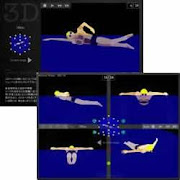



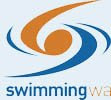
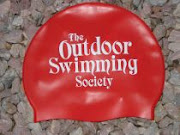

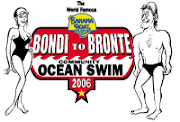


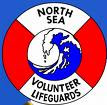
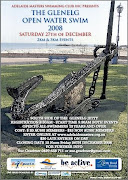





2 comments:
why were the times in general so slow this year?
There was a strong south current that the swimmers were swimming straight into.
Post a Comment